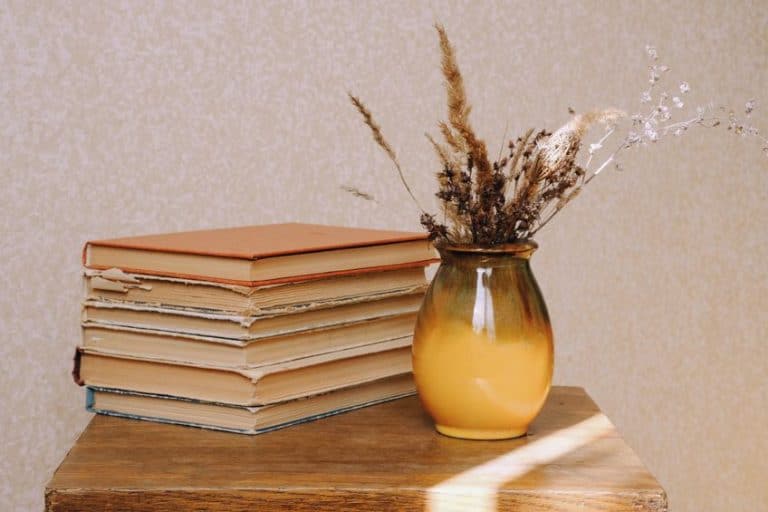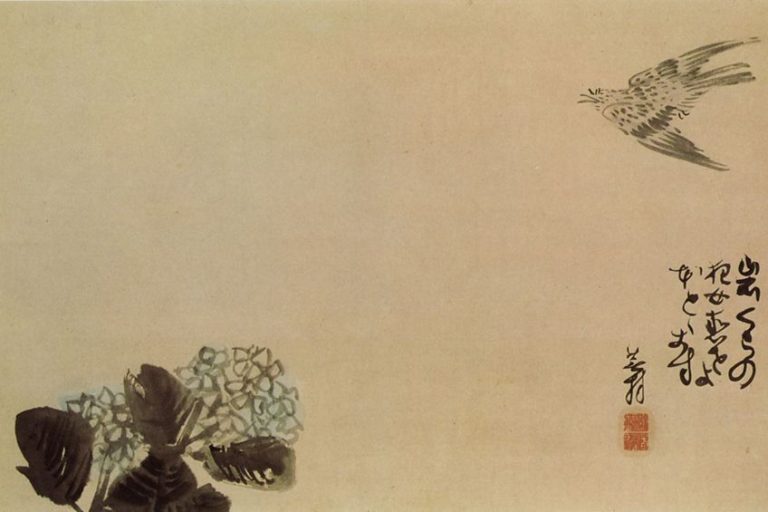Metaphysical Poetry – Capturing the Otherworldly in Verse
Sometimes a type of poetry is “of a certain time”, and that is the case with today’s point of focus: metaphysical poetry. So, what is metaphysical poetry then? This will be our question of focus today. We will have a look at the history of this form of poetry, some of the characteristics for which it has become known, some of the goals that it attempted to achieve, and a few examples of metaphysical poetry to help explain and explore the concept in greater depth. This article should be of help to those who want to know about metaphysical poetry but have not yet had the time to do so. If this describes your interest in metaphysical poetry, you have some learning to do!
Table of Contents
A Look at Metaphysical Poetry
Back when I used to teach high school, and even when I provided educational material to university students, I would sometimes need to explain that certain forms of literature and theory come from a very specific time and place. That is the case with metaphysical poetry. Sometimes, something can only really be understood based on its particular goals during a particular period. That isn’t to say that metaphysical poetry cannot be enjoyed without also knowing your history, but it can perhaps be better enjoyed when we understand where it comes from. This will be part of our focus today.

A Summary of Metaphysical Poetry
There are many different types of poetry out there, and some of them are marked by very specific definitions. This is generally the case with metaphysical poetry. So, what is metaphysical poetry? We’ll be answering that in-depth throughout this article, but here’s a quick look for those who may need it:
- Metaphysical poetry is an intellectually complex form of poetry. Some of the principal characteristics of metaphysical poetry lie in its use of more intellectually complex ideas that are portrayed through elaborate forms. This form of poetry is known for tackling tough and interesting issues.
- Metaphysical poetry originated in 17th century England. This form of poetry attained its name retrospectively. The metaphysical poets did not call themselves this, and it was instead applied by later thinkers to help describe this particular trend in 17th-century poetry.
- Metaphysical poetry still exists in some form. While the actual movement that came to be known as metaphysical poetry has come to an end, the influence of this form would have an effect on later writers. While we could argue that later writers who used a similar style to the metaphysical poets are not writing true metaphysical poetry, we could also argue in the other direction.
This has been a summary of metaphysical poetry, which, in my experience as a literature teacher, is something that can be a very useful thing. Many students can easily forget certain aspects of a topic.
A brief and bullet-pointed list can be of great help to those who need a quick leg up.
The History of Metaphysical Poetry
The beginnings of metaphysical poetry emerged in the 17th century in England. However, these writers did not self-identify as metaphysical poets. Instead, this label came several decades later while other writers were attempting to define this earlier period in time. Many trends in literature, and other areas, can only truly be seen in retrospect.

Some of the poets who were identified as the primary metaphysical poets included figures such as John Donne, Andrew Marvell, and George Herbert. There were several others, but the list of writers who have been labeled as metaphysical poets is a relatively short one. However, this does present us with a question: Does metaphysical poetry still exist today?
The answer is both a yes and a no. You see, these poets were labeled as a historical group, but they would go on to influence many others who made use of ideas and techniques that the metaphysical poets developed. However, this does not necessarily make those people metaphysical poets but rather those who were simply influenced by them. This can become a difficult thing to determine for certain, but it definitely is an interesting question to ponder.
The Characteristics of Metaphysical Poetry
The principal characteristics of metaphysical poetry have to do with its examination of philosophical ideas and concepts. However, while this is one of the central ideas, it is far from the only idea that is often explored in this type of poetry. In addition to the use of philosophical ponderings, metaphysical poetry also made use of more elaborated forms of figurative language, paradoxical structures, strange imagery, and a more intellectual overall focus. Interestingly, many examples of metaphysical poetry also made use of more colloquial language and expression, including the use of more relaxed forms of meter. This means that while metaphysical poetry was noted for its use of philosophical ideas, it also wrapped those ideas in more understandable language.
This is an interesting choice as many other intellectual writers, such as T.S. Eliot, would entirely ignore the idea of ease of understanding in favor of immense complexity.
The Goals of Metaphysical Poetry
What was the point of metaphysical poetry in the first place? Well, it must be remembered that this form of poetry was not defined during its major period. Instead, it would only come to be defined by those who lived decades later. However, the poets who came to be seen as the metaphysical poets did have a number of goals that they explored in their poetry.
Some of the more common of these goals was the exploration of philosophical ideas. They would often try to understand aspects of the world, to focus on spirituality, science, and morality. They explored concepts such as free will and the very nature of the world as a whole. This is also why they came to be known as the metaphysical poets. Metaphysics is a branch of philosophy that focuses on understanding reality itself and is often some of the earliest philosophy that is taught because it serves as a backbone against which other concepts can be later explored.

During my days as an English and literature teacher, I would often inject these kinds of philosophical inquiries into my teaching. We may think that younger people do not consider philosophical questions, but this is not the case. Many people want to explore and discuss these kinds of ideas, but there is seldom an avenue through which they can be allowed to do so. Poetry provides such an avenue. We cannot simply look at poetry from a formal perspective and see how it uses words, symbols, and structure, we also need to look at the ideas that it is presenting to us.
This is what metaphysical poetry allows us to do. Well, that and the use of certain formal elements. While metaphysical poetry was used to explore these kinds of philosophical ideas, it was also there to use figurative language in innovative ways, to alter the way poetic structure was used, and so on.
Many different aspects of metaphysical poetry are worth discussing.
Examples of Metaphysical Poetry
There are quite a number of examples of metaphysical poetry in the world, but we’ll only be having a look at three of them. These poems represent some of the most famous examples of metaphysical poetry from three of the figures who are seen as integral to the movement as a whole. Hopefully, this should serve as a way to aid in answering the question: “What is metaphysical poetry?” If you’d like an answer to that, let’s have a look at some of these particular instances.

The Collar (1633) by George Herbert
| Date Published | 1633 |
| Type of Poem | Metaphysical poem |
| Rhyme Scheme | Variable |
| Meter | Variable |
| Topic | Spiritual struggles |
The Collar is a famous instance of metaphysical poetry because it examines ideas to do with spirituality, freedom, and pleasure. It explores the constraints that are placed upon those in religious positions and the desires that come with wishing for a guilt-free life in which pleasure is celebrated rather than rejected. This is a good instance of metaphysical poetry because it makes use of an extended metaphor, uses more abstract themes, and is written in a more dramatic monologue style.
This poem has come to be seen as one of the best-known instances of metaphysical poetry, and the ideas that it explores are indicative of the poetic variety as a whole.

The Flea (1633) by John Donne
| Date Published | 1633 |
| Type of Poem | Metaphysical poem |
| Rhyme Scheme | AABBCCDDD |
| Meter | Iambic tetrameter and pentameter |
| Topic | Sex |
The Flea is a poem about sex. This is one of the more common areas that metaphysical poetry would often explore, and the last poem on this list is also an instance of this particular topic. In this poem, the poet uses the metaphor of a flea to show that the drinking of blood is something natural to the flea just as sex is something natural to the human. The use of an extended metaphor, candid explorations of sexual themes, and a wittier delivery are indicative of the kinds of work for which the metaphysical poets became so well known.
This is another of the metaphysical poems that has become a standout example of the form.

To His Coy Mistress (1681) by Andrew Marvell
| Date Published | 1681 |
| Type of Poem | Metaphysical poem |
| Rhyme Scheme | AABB |
| Meter | Iambic tetrameter |
| Topic | The inevitability of time and death |
To His Coy Mistress is not only one of the best-known metaphysical poems, but also a famous carpe diem poem. This means that the poem is all about seizing the day and living as if every day is potentially your last. In this particular case, like with many metaphysical poems, the act of seizing the day comes in the form of sexual pleasure. The speaker tries to convince someone to have sex because we’re all going to die eventually anyway, and wouldn’t it have been a waste to maintain chastity when there was so much pleasure to be had? This is a common theme explored in many examples of metaphysical poetry.

In this article on metaphysical poetry, we have looked at the definition of this concept as well as the history of the form, some of its characteristics and goals, and a handful of examples of metaphysical poetry. This should be beneficial to anyone who wants to learn more about the time of the metaphysical poets and the kinds of work that they produced. Hopefully, this has managed to help those with these very same desires. However, to truly experience metaphysical poetry, you should read more examples of this form.
Frequently Asked Questions
What Is Metaphysical Poetry?
When it comes to an understanding of metaphysical poetry, we can somewhat see the idea reflected in the name itself. This is a form of poetry that focuses on intellectual content that uses elaborate language, complex structures, and often strange imagery. The label was applied more retrospectively to several writers.
Where Did Metaphysical Poetry Originate?
The origins of metaphysical poetry can be traced to England in the 17th century. This term was used later to describe several poets who were not connected to one another yet had similar goals in their poetry. The poets labeled as metaphysical poets did not use this term to describe themselves.
What Are the Characteristics of Metaphysical Poetry?
Some of the standard features of metaphysical poetry lay in the use of more intellectual topics, elaborate forms of figurative language, highly complex forms and ideas, and so on. The name of this poetic form reflects the more philosophical inclinations of the poets who have come to be seen as metaphysical poets.
Does Metaphysical Poetry Still Exist?
This poetic form still exists, but not in the way that it did in the 17th century in England. Instead, modern writers have taken inspiration from traditional metaphysical poetry and made use of similar ideas and formal arrangements. So, one could also argue that modern writers who use these ideas are not actually true metaphysical poets.
What Are Some Famous Examples of Metaphysical Poetry?
There are several writers who came to be known as the metaphysical poets. Some of their best-known works include The Collar (1633) by George Herbert, The Flea (1633) by John Donne, and To His Coy Mistress (1681) by Andrew Marvell. However, there are more than only these that have been shown.
Justin van Huyssteen is a freelance writer, novelist, and academic originally from Cape Town, South Africa. At present, he has a bachelor’s degree in English and literary theory and an honor’s degree in literary theory. He is currently working towards his master’s degree in literary theory with a focus on animal studies, critical theory, and semiotics within literature. As a novelist and freelancer, he often writes under the pen name L.C. Lupus.
Justin’s preferred literary movements include modern and postmodern literature with literary fiction and genre fiction like sci-fi, post-apocalyptic, and horror being of particular interest. His academia extends to his interest in prose and narratology. He enjoys analyzing a variety of mediums through a literary lens, such as graphic novels, film, and video games.
Justin is working for artincontext.org as an author and content writer since 2022. He is responsible for all blog posts about architecture, literature and poetry.
Learn more about Justin van Huyssteen and the Art in Context Team.
Cite this Article
Justin, van Huyssteen, “Metaphysical Poetry – Capturing the Otherworldly in Verse.” Art in Context. January 18, 2024. URL: https://artincontext.org/metaphysical-poetry/









